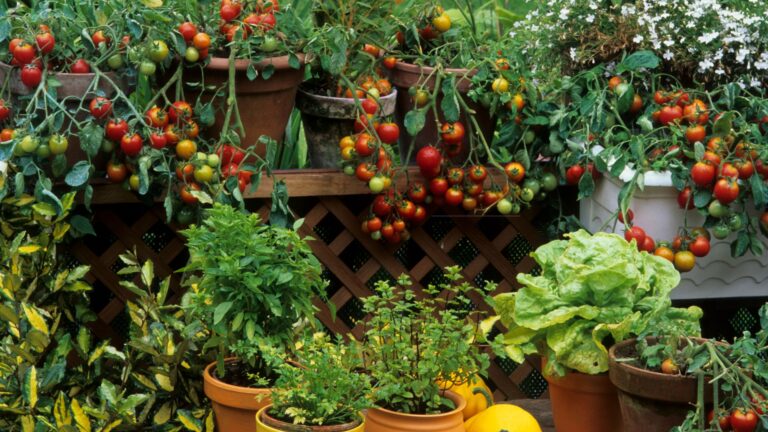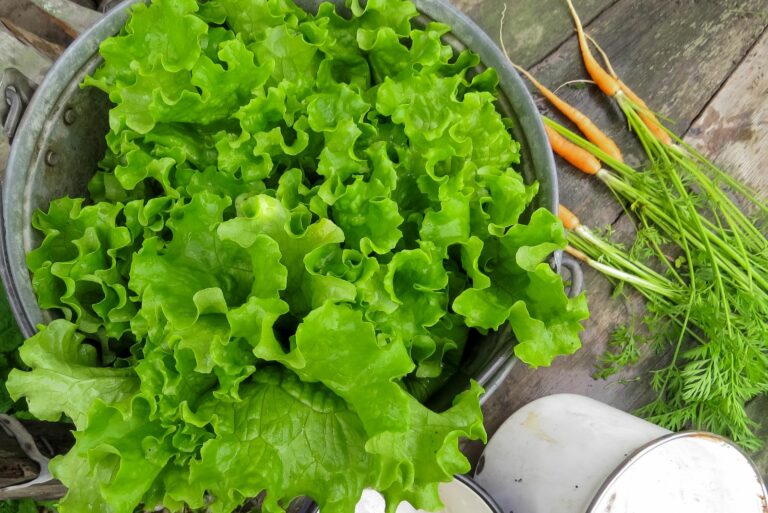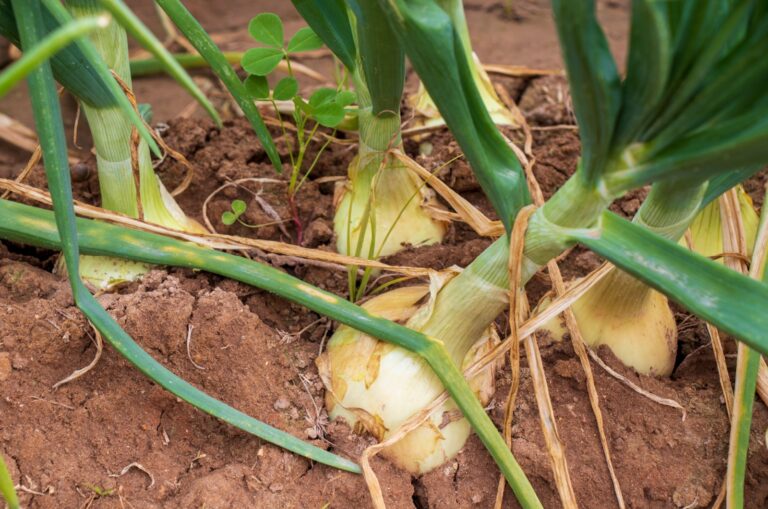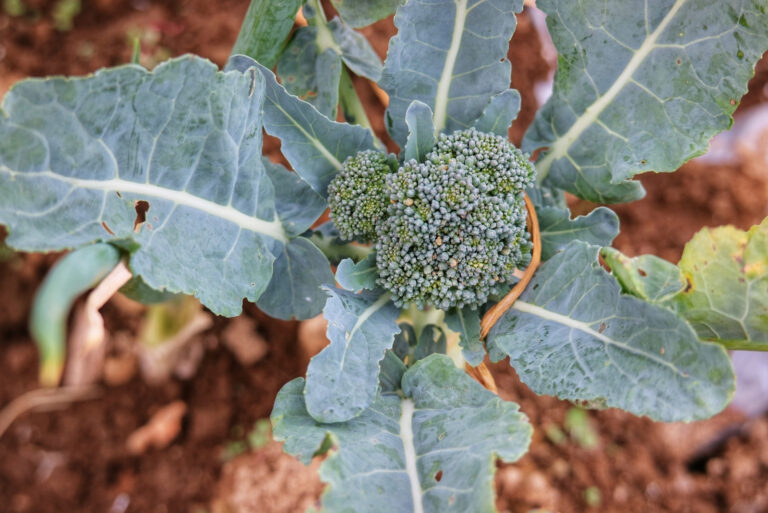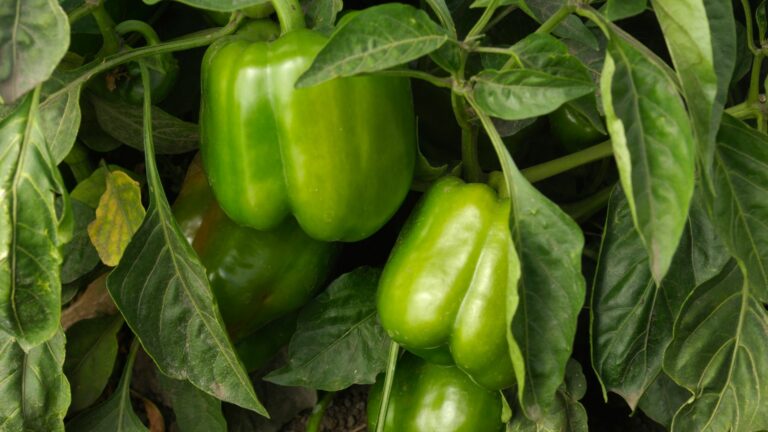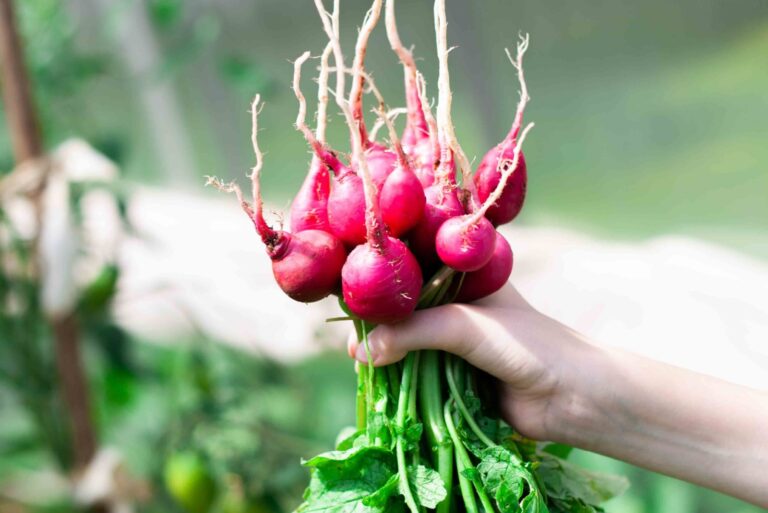How Many Pumpkins Per Plant? Read On To Find Out The Answer
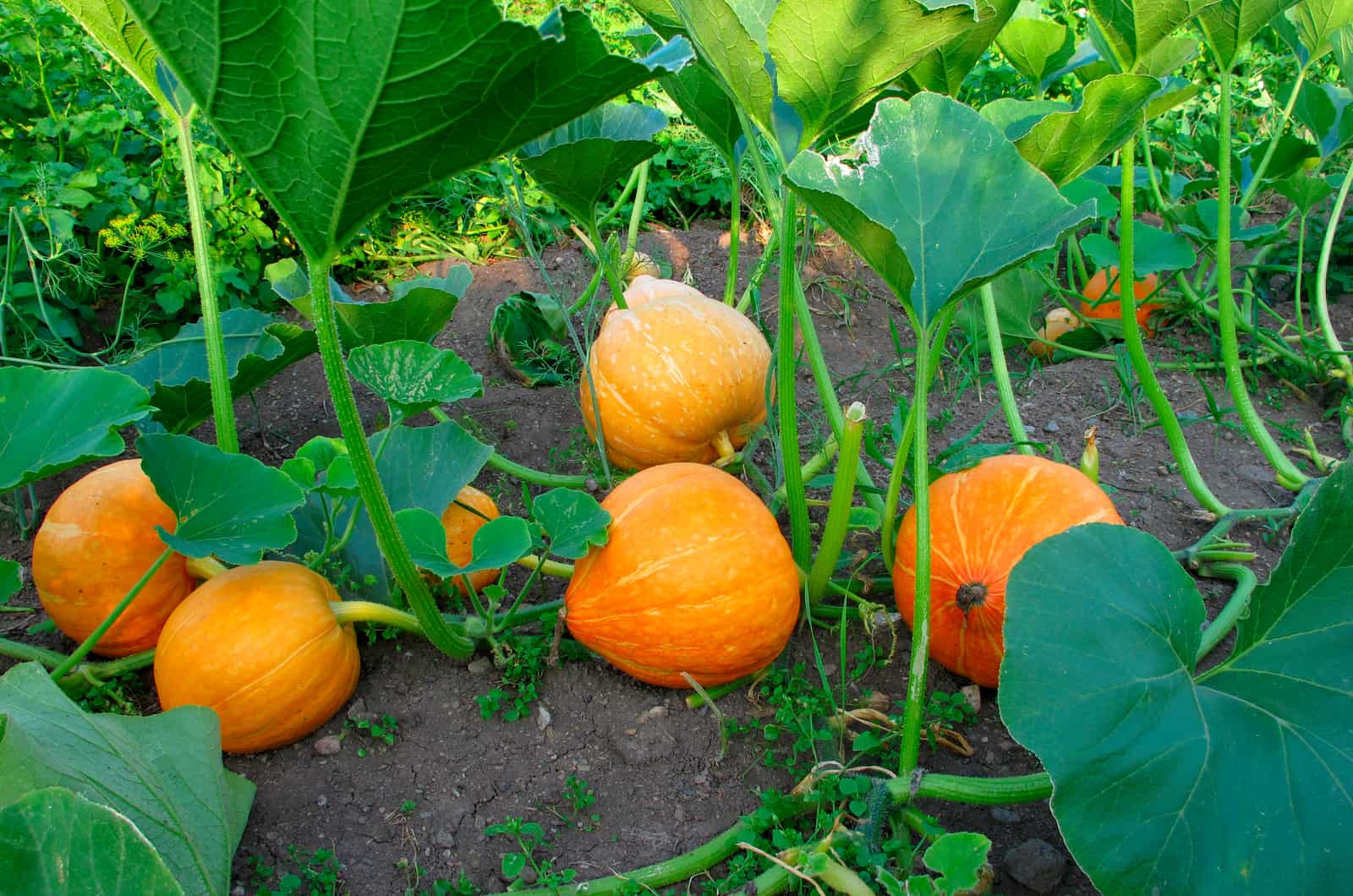
Two things come to my mind when I think of pumpkins, the first one is Cinderella and the second one is Halloween.
When I think about pumpkins for some time, I think of them as edible fruits, mainly found in pumpkin pie.
No wonder plant growers decide to grow at least one pumpkin variety!
Of course, the number of pumpkins the pumpkin plant produces depends on the size and conditions that the pumpkins grow in.
The pumpkins range from 1 to 12, depending on the size and pumpkin variety.
Do you want to grow pumpkins or know the exact number of pumpkins you’ll get because you need them for Halloween? Read on and find out how many pumpkins per plant you can expect.
How Many Pumpkins Per Plant?
The larger the pumpkin plant, the fewer the pumpkins. The miniature varieties can produce up to 12 pumpkins, standard pumpkins can produce 5 pumpkins, and giant versions usually produce 1 pumpkin per plant.
Let’s get into the details!
Size Of The Pumpkin Plant
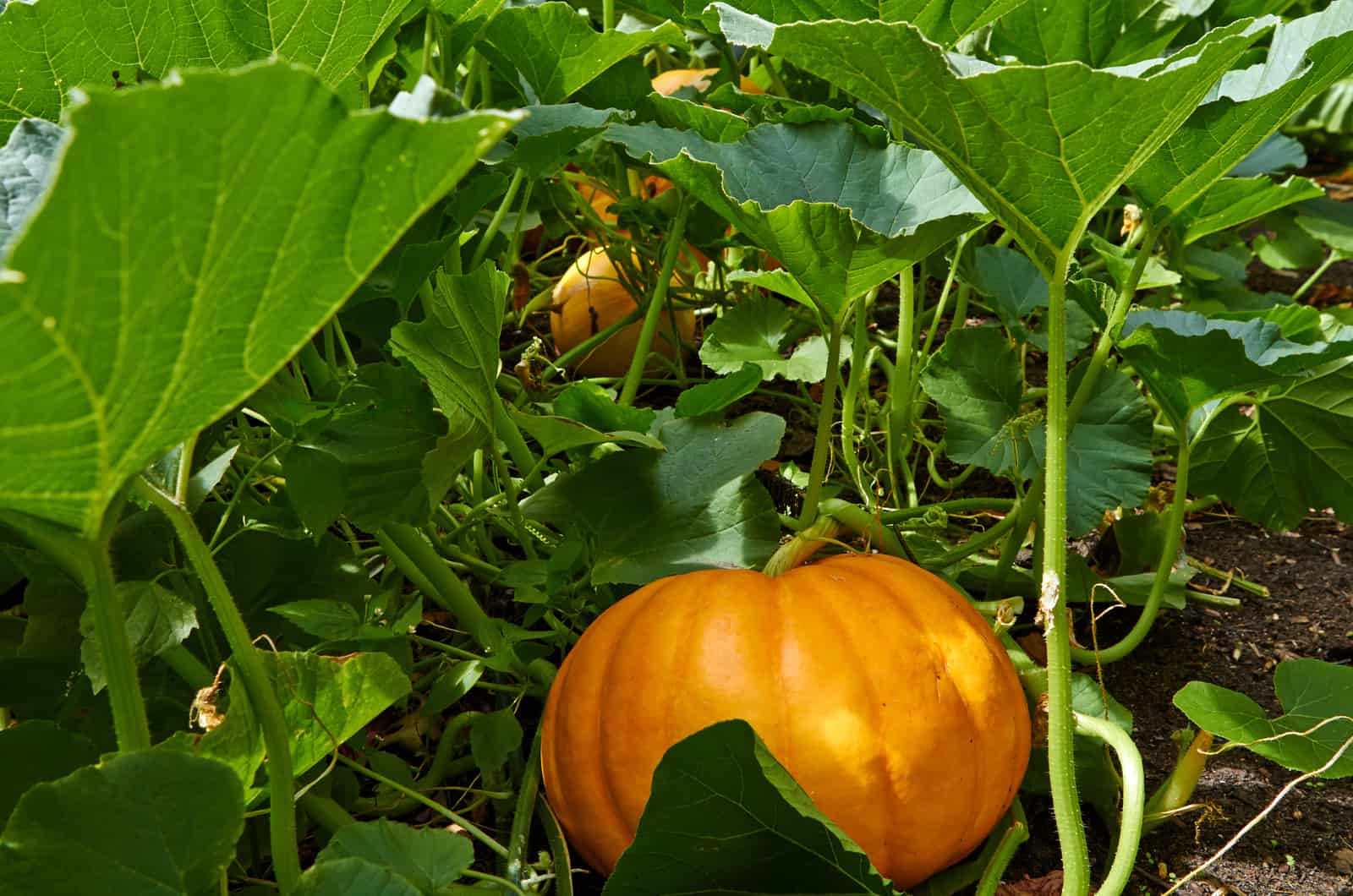
The pumpkins come in many sizes, from very small to giant ones. That’s why we have different sizes of fruits and so many varieties to grow.
Let’s see how many pumpkins the different varieties can produce.
Miniature Pumpkin
I’m a big fan of miniature pumpkins. They are cute and produce a lot of pumpkins. Additionally, they come in beautiful colors, so you have three reasons to grow them.
A miniature pumpkin produces up to 12 pumpkins during one growing season.
Jack Be Little (Jack B) and Baby Boo are some of the most common varieties. They can weigh from half a pound to 2 pounds.
Smaller varieties are vining and climbing plants. You’ll get a spectacular view of your garden if you grow some pumpkins.
They come in creamy yellow, white, and orange.
Small Pumpkin
More miniature pumpkins can weigh between 3 and 5 pounds. A small pumpkins plant can produce from 8 to 10 pumpkins.
Have you ever heard of Sugar Pie? We most commonly use this pumpkin variety to make delicious pumpkin pies. These pumpkins are sweeter, and their flesh isn’t as stringy compared to other, larger varieties.
Medium-Sized Pumpkin
Medium-sized pumpkins weigh from 6 to 20 pounds. You can expect to harvest from 3 to 6 pumpkins apiece at the end of the growing season.
The most common medium-sized varieties are Jackpot and Ghost Rider.
Large Pumpkin
These are the standard jack-o-lantern varieties and can weigh 15 to 30 pounds. You can expect to harvest from 3 to 5 pumpkins per plant.
The most common varieties are Howden, Jumpin’ Jack, and Cinderella pumpkin. Large pumpkins are used for Halloweens but also when cooking delicious treats.
Giant Pumpkin
Giant or jumbo pumpkins can weigh anywhere between 50 and 2,000 pounds. The most famous giant varieties are Dill’s Atlantic Giant and Big Max.
One interesting fact: According to one research article, the heaviest pumpkin weighed over 2,500 pounds (Cinderella would have been thrilled).
If you decide to grow a giant pumpkin variety, you won’t get more than one pumpkin per plant.
Planting Pumpkins
I’m sure you’ll be thrilled when you find out that pumpkins can be grown almost anywhere. The only thing you should pay attention to is the variety.
Like every other plant, pumpkins need different conditions to promote growth. Don’t worry; it’s not a demanding plant. It will require a proper location, a specific type of soil, it doesn’t like to be too close to other plants but enjoys their company (make me some room, please).
Let’s see what you have to ensure before you start growing pumpkins.
Choose The Right Time
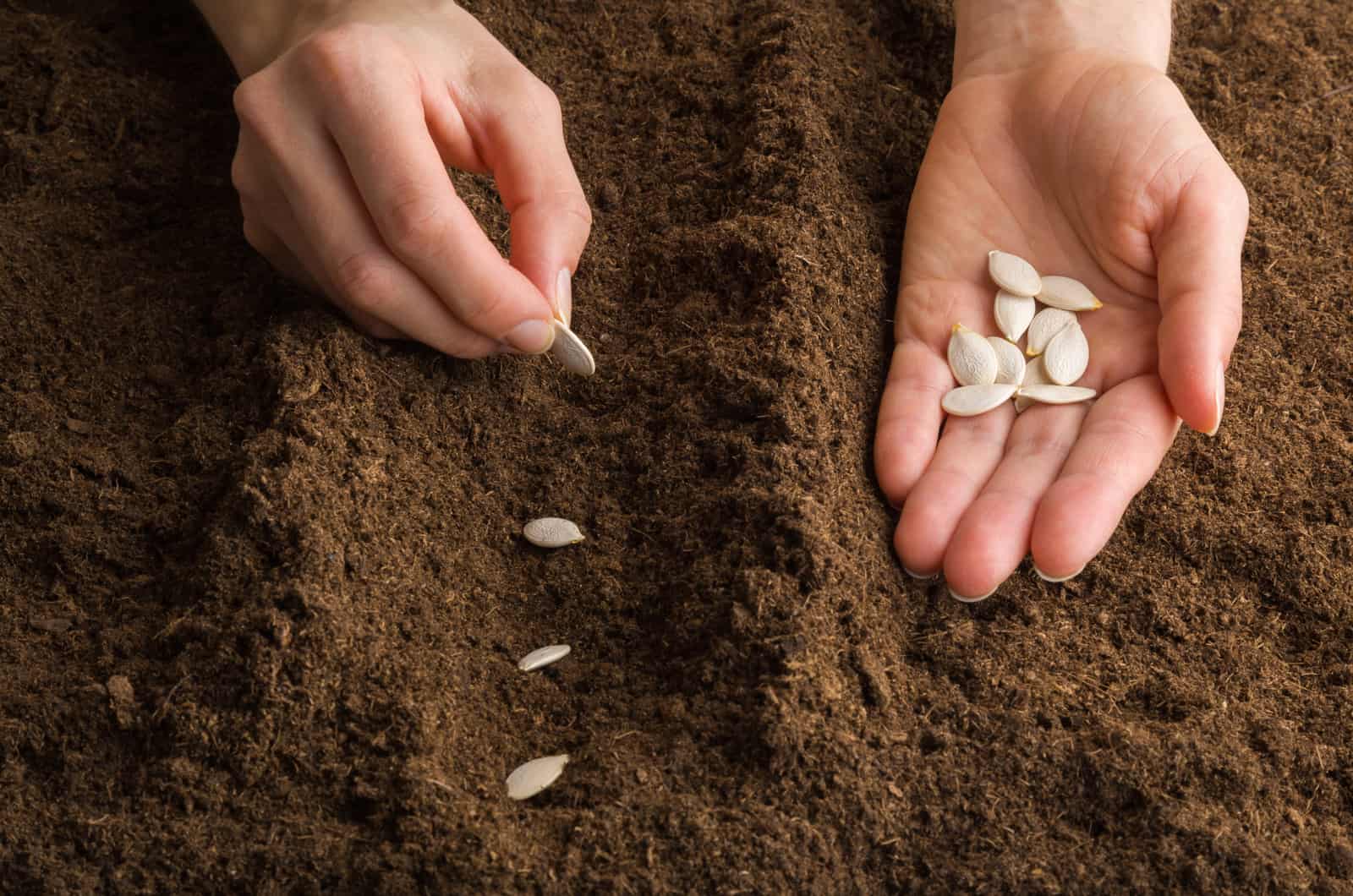
Pumpkin plants despise the frost and can’t take it for a second, so you have to wait until the danger of frost disappears. The best time to plant pumpkins is in the late spring or early summer, and the temperature needs to be over 50 degrees Fahrenheit. The time to grow pumpkins mainly depends on the region you live in.
For example, if you live in the United States and want to grow pumpkins with an average growth rate, you should choose May or early June to plant them. Some varieties may mature faster, so you can plant them in July and still have a crop in the autumn.
The growing season in warmer climates lasts longer and won’t affect you sowing the seeds outdoors.
On the other hand, the growing season in colder climates lasts a shorter time, and you’ll have to sow the seeds indoors. If the weatherman announces a danger of frost, sow the seeds about a week before and plant them outdoors after the danger is gone.
Spacing Between The Plants
Pumpkins are prone to many plant diseases, like powdery mildew, downy mildew, and anthracnose (fungal infections). Additionally, bacterial infections may occur, such as bacterial leaf spots. Like every other fruit, it’s prone to fruit rot if the proper conditions aren’t provided.
Wet air and dump are the culprits for the microbes that spread these diseases. I suggest you give plenty of space to each pumpkin plant to keep your pumpkins healthy and help them thrive.
The varieties will determine the spacing needs between the plants you decide to grow. Some varieties are bushier, which means they’re more compact and need less space. On the other hand, the vining varieties require plenty of room as they stretch out.
When you decide to grow pumpkins, consider row spacing and the space between the pumpkins in each row.
Take a look at the table to see approximate row spacing and space between the plants.
[table id=185 /]Even though some gardeners claim that pumpkins need equal space, I suggest you stick to this table to get the best results.
Here’s a video:
Choose The Right Location
Pumpkin plants are big fans of full sun. It doesn’t matter which variety you grow or the size of the pumpkin; each needs at least 6 hours of full sun per day. If there’s more, even better!
The number of pumpkins you’ll get depends on the amount of full sun the plants receive.
Soil Type

Pumpkin plants require warm soil temperatures and well-draining soil with a pH level ranging from 6.0 to 6.5.
You can test the pH level by purchasing the tests designed explicitly for soil pH and other valuable nutrients. If the soil needs to increase or decrease in acidity, purchase acidifiers or alkalizing products.
The perfect soil for pumpkins should be rich in organic matter and have a light and sandy texture. The sand is essential as pumpkins can’t withstand waterlogged soil.
If you grow pumpkins in heavier soil, you can add well-rotted manure or compost to improve the drainage and ensure the soil retains water.
Add fish emulsion to increase the nutritional value of the soil.
Ensure Company
Pumpkins grow better if they’re grown in gardens with other plants. However, some plants may not make good companions, so pay attention when choosing pumpkin companions.
A plant that is grown with pumpkins should:
• Attract pollinators.
• Repel pests.
• Promote pumpkin growth.
Luckily, many plants make good company for your pumpkins. You can grow melons, corn, garlic, marigold, sage, mint, and thyme.
I would like to share one exciting yet essential thing that you will need to know if you decide to grow pumpkins. Never plant pumpkin and squash next to each other as they can cross-pollinate, and the reason this happens is because the squash and pumpkin are close relatives.
It may not affect the fruits in any way, but it can affect the seeds. Cross-pollinated pumpkin and squash seeds may give you, I dare to say, weird fruits. Therefore, plant them for one year together but destroy the seeds after the harvest.
Moreover, there are three plants which should never be planted near pumpkins. Onions, beets, and potatoes are root crops, which means they need lots of space.
When you harvest these plants, you could damage any nearby, sensitive pumpkin roots.
Ensure enough space between these three plants and pumpkins. I grow them on the other side of my garden, just to be sure.
Growing Pumpkins
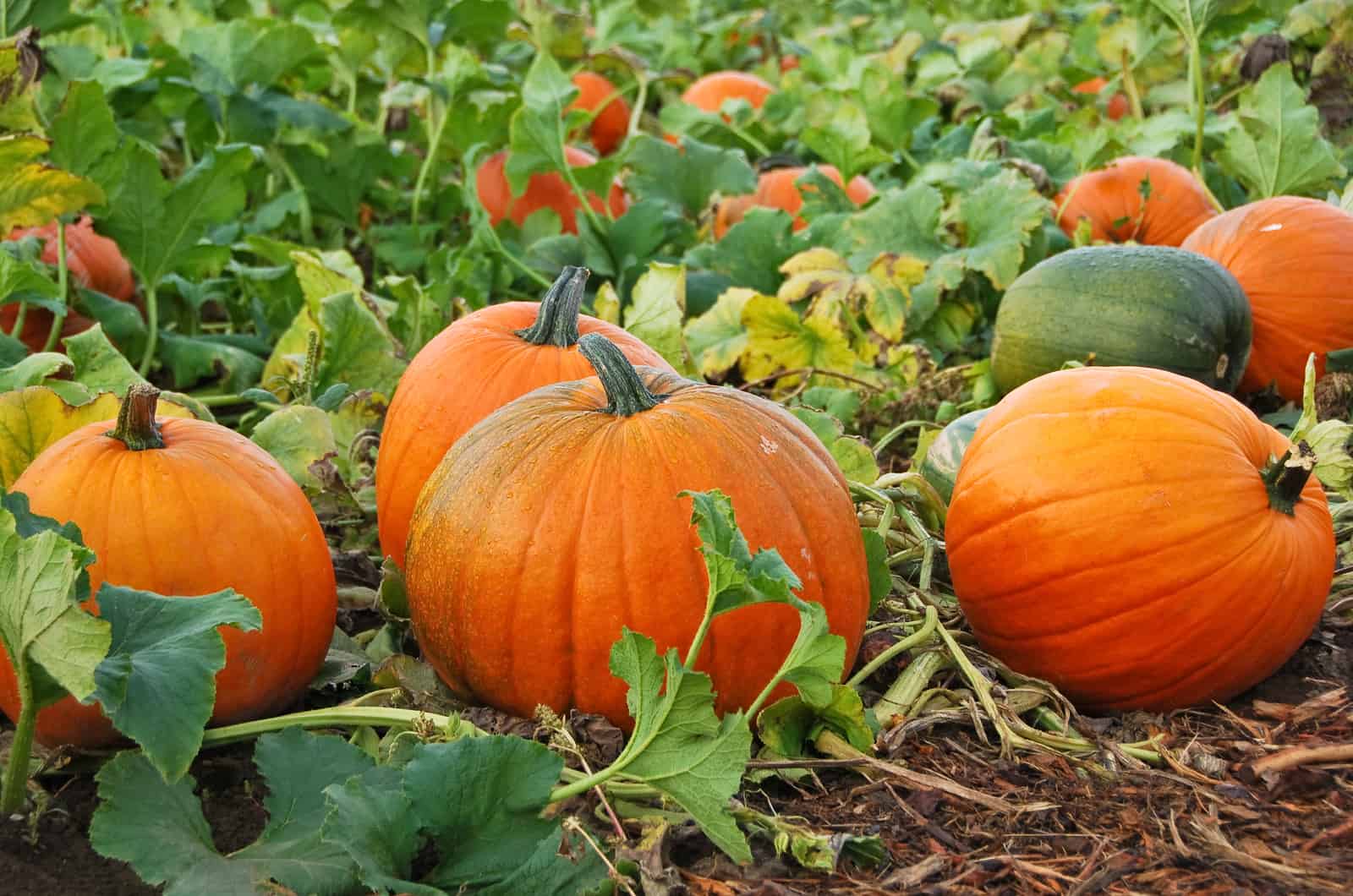
Pumpkins will produce enough fruits (how many depends on the variety) if they grow in the required conditions.
You’ll need about 4 pumpkin seeds or transplants per mound. The germination lasts for a few days, and you can place row covers over them to prevent any issues. After germination, pay close attention to ensuring conditions to promote the growth in other pumpkin growing stages.
Pumpkins appreciate a good amount of water, nutrients, and mulch. If you notice excess foliage, you should prune them. Pumpkins are not fans of strong fertilizers, so be careful not to over fertilize or use any harmful chemicals.
Let’s dig deeper!
Watering
Don’t spare water when you water the pumpkins; give them a lot of water, about 1 inch of water each week. Pumpkins dehydrate quickly, so pay attention to the watering schedule, especially during a hot summer.
Avoid watering leaves or stems; aim for soil instead. Watering activates the nutrients within the soil, and the roots uptake those nutrients and send them to the other parts of the plant. Therefore, watering stems or leaves won’t do any good.
Additionally, if the leaves receive too much water, they become susceptible to pests and diseases.
Feeding
Pumpkins put great effort into producing delicious fruits, so why don’t you reward them a little? Pumpkins appreciate fertilization from time to time.
You can fertilize your pumpkins every month after you spot the first flowers. If you prefer organic fertilizers, choose well-rotted manure or compost.
On the other hand, if you decide to purchase fertilizer, make sure it’s rich in nitrogen (which helps young plants to produce foliage), phosphorus (applied during the blooming phase), and a combination of phosphorus and potassium once the plant starts growing.
I find it reasonable to apply different fertilizers during each plant growth stage. However, I wouldn’t recommend this strategy to beginners.
Pruning
You now know how much space pumpkins need, so you should prune their vines to ensure the space. Additionally, you will help the plant channel the energy to where it should, of course, to produce the fruits.
Apply Mulch
A mulch should be applied due to three reasons:
• It retains water and regulates moisture levels.
• It deters pests.
• It helps with weed control.
I think you can guess which type of mulch has the properties above. Yes, it’s compost.
Compost has two beneficial features; it feeds food-loving pumpkins and serves the protective purposes of the mulch.
Support
I have one great tip for you if you decide to grow pumpkins. I elevate the pumpkin slightly off the soil, placing them on cardboard or fabric.
The best time to use this method is when you notice the fruits are forming. However, you can do this in midsummer when the plant starts to gain some weight. Remember that the weight depends on the pumpkin variety. Therefore, each pumpkin variety has a different average weight.
I’m sure you are wondering why you should do this. Well, it will retain the excess water and prevent rot.
Turning The Pumpkin
Now we come to the appearance of the plant. This step isn’t a must but if you grow pumpkins for decorative purposes, use this technique.
Carefully turn the pumpkin on the vine and repeat the procedure for a few days, preventing a flat side. Please do this gently, as damaging the pumpkin’s delicate stems is easy.
This technique helps your pumpkin to stay round and eye-catching.
When To Harvest Pumpkins
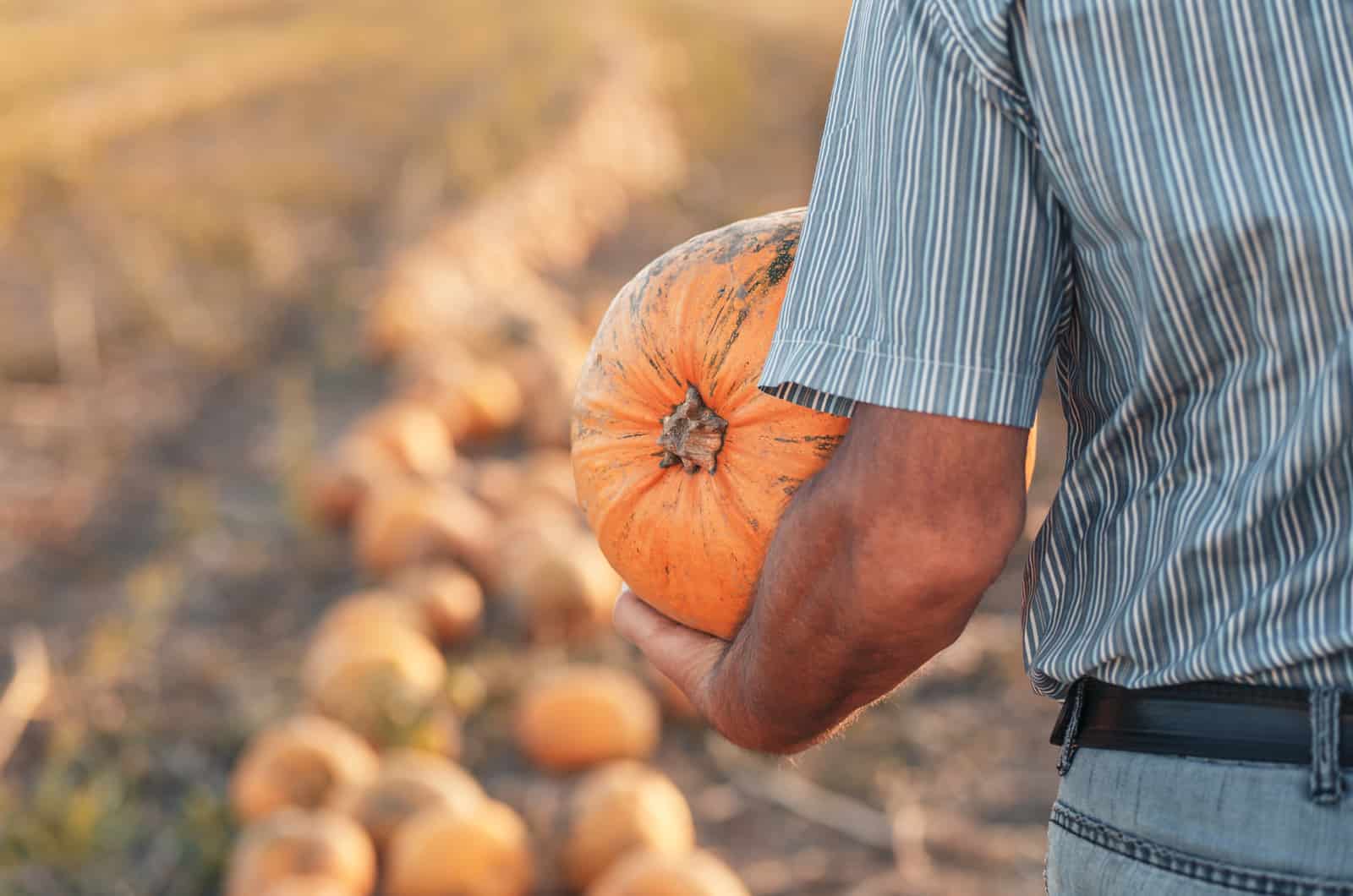
I’m sure you’ve been waiting for this part impatiently.
The time of harvest depends on the time when you planted your pumpkin. If you planted your pumpkin after the last frost, in warm soil, you could expect the crops before the first frost.
Therefore, a general rule is to plant after the last and harvest before the first frost during one season.
However, this isn’t always possible. If your pumpkin isn’t ripe before the first frost, you should protect it. Use blankets, sheets, cardboard boxes, or anything similar to prevent the vines rotting and crops from hardening.
You can tell that the pumpkin is ready if it’s solid and orange (depending on the variety of pumpkin). The rind should be hard (thump it, and it’s ready for harvest). If you can’t puncture the pumpkin’s skin using your fingernails (sounds unsanitary, but it’s useful) harvest the crop.
The most obvious signs of a ripe plant are dying pumpkin vines.
Before harvesting, put on your gloves and prepare a knife (make sure it’s sterilized).
Never hold the main vine when harvesting, as it can snap off completely. Select a stem a few inches above the plant and cut it.
More About Pumpkins
• There are two types of pumpkin flowers, and they are used for pollination. Male flowers are fruit-bearers and appear first. Shortly after, female flowers appear and should be removed during the first three weeks of growing. You can aid pollination by using a paintbrush to rub pollen and transfer it from male to female flowers.
• You can grow your pumpkins on a trellis, which will make a great addition to your garden and you’ll get delicious fruits. The vines are the main factor in pumpkin growing, so be careful when handling them.
I use pumpkins to make many delicious meals, but one stands out, butternut pumpkin pie.
Here’s the recipe:
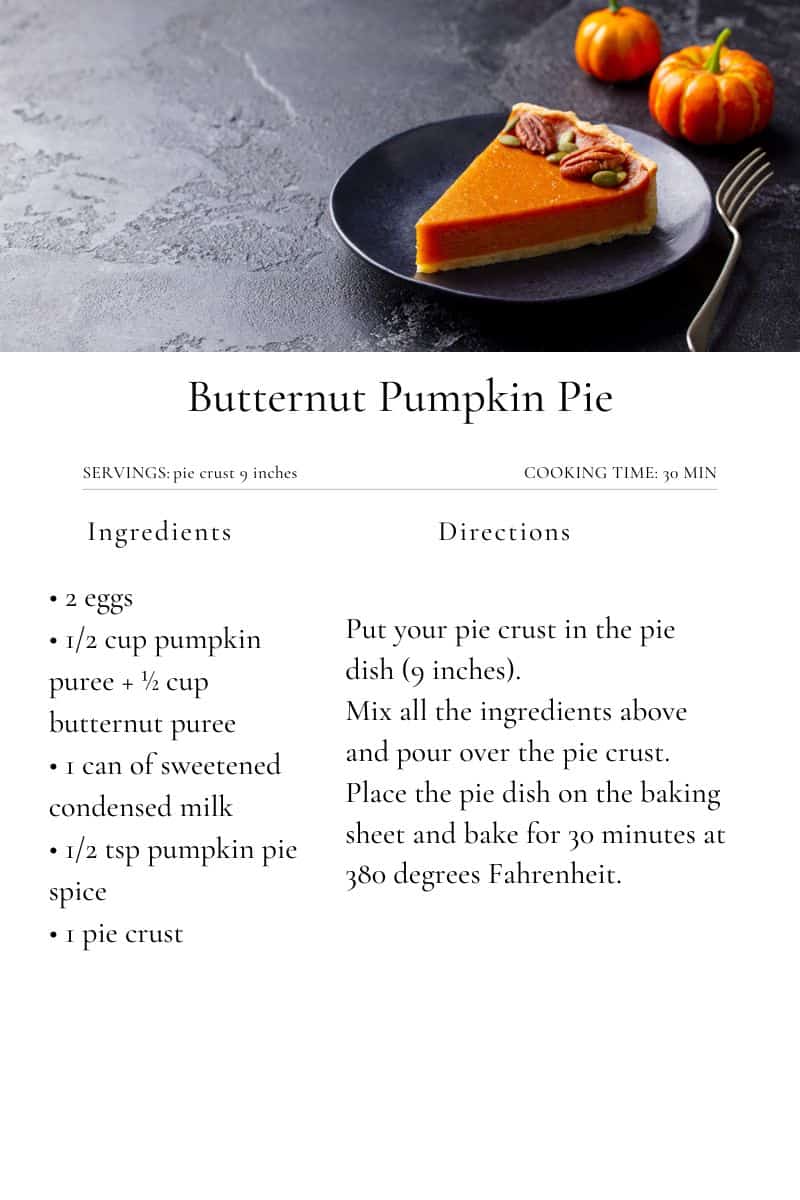
FAQs
How long does it take for a pumpkin plant to produce fruits?
The pumpkin plant needs about 100 days to produce fruits, this depends on the variety of the pumpkin. For example, you can expect your miniature pumpkin to produce fruits in 90-100 days. Standard pumpkins like Ghost Rider need about 110 days, whereas giant pumpkins produce fruits in about 150 days.
How many pumpkins are there per square foot?
You will need 50 to 100 square feet if you decide to grow vining pumpkins. If you don’t have that much space, you can grow bush varieties such as Bushkin and Spirit.
Wrapping Up
Pumpkins are really worth growing. They are both decorative and tasty.
Different pumpkin varieties produce different numbers of pumpkins. Now that you know the answer to how many plants per pumpkin, I suggest you choose one variety and grow your own for Halloween.
Who knows, maybe it’ll turn into The Pumpkin Coach…
Until next time!

